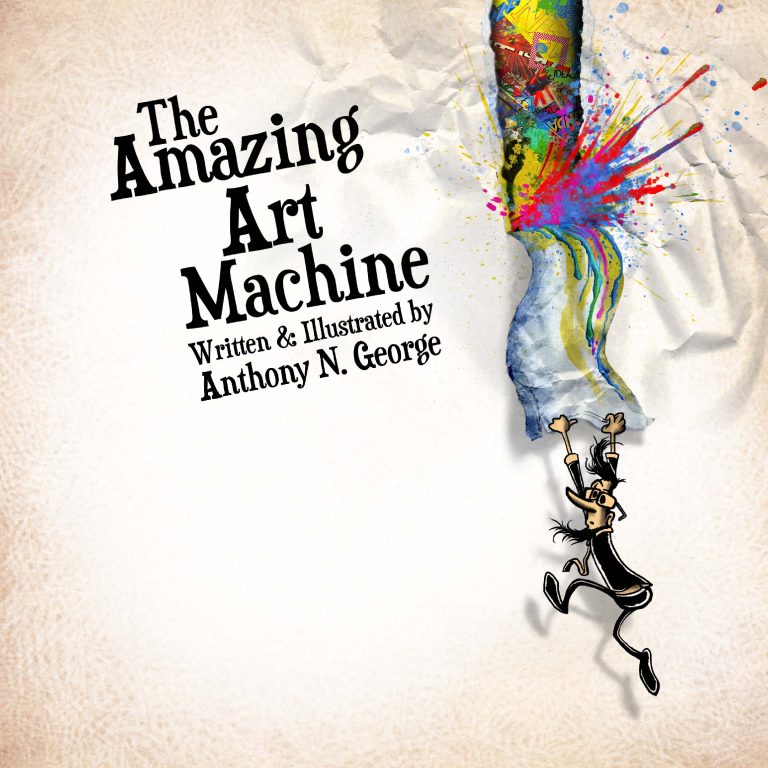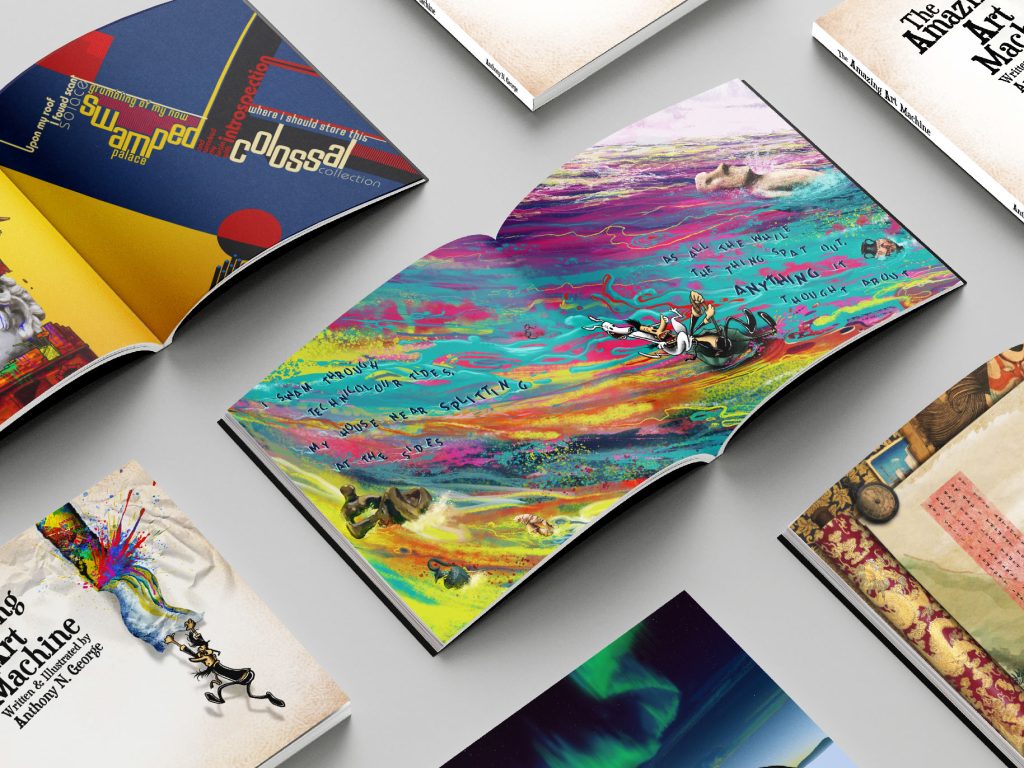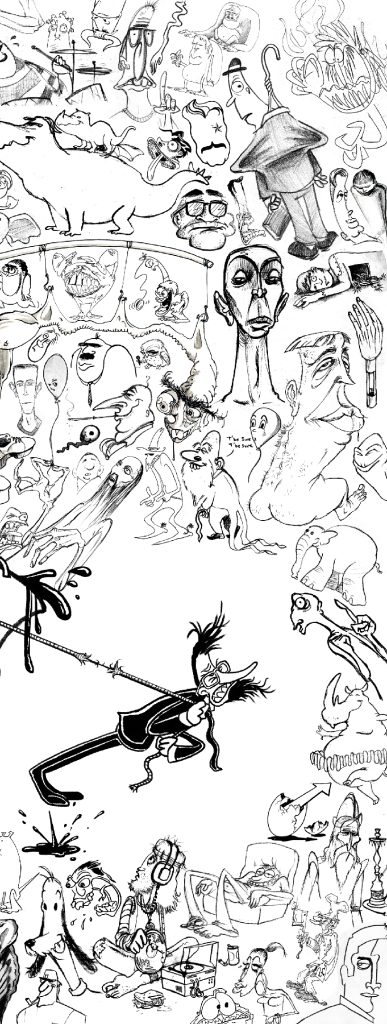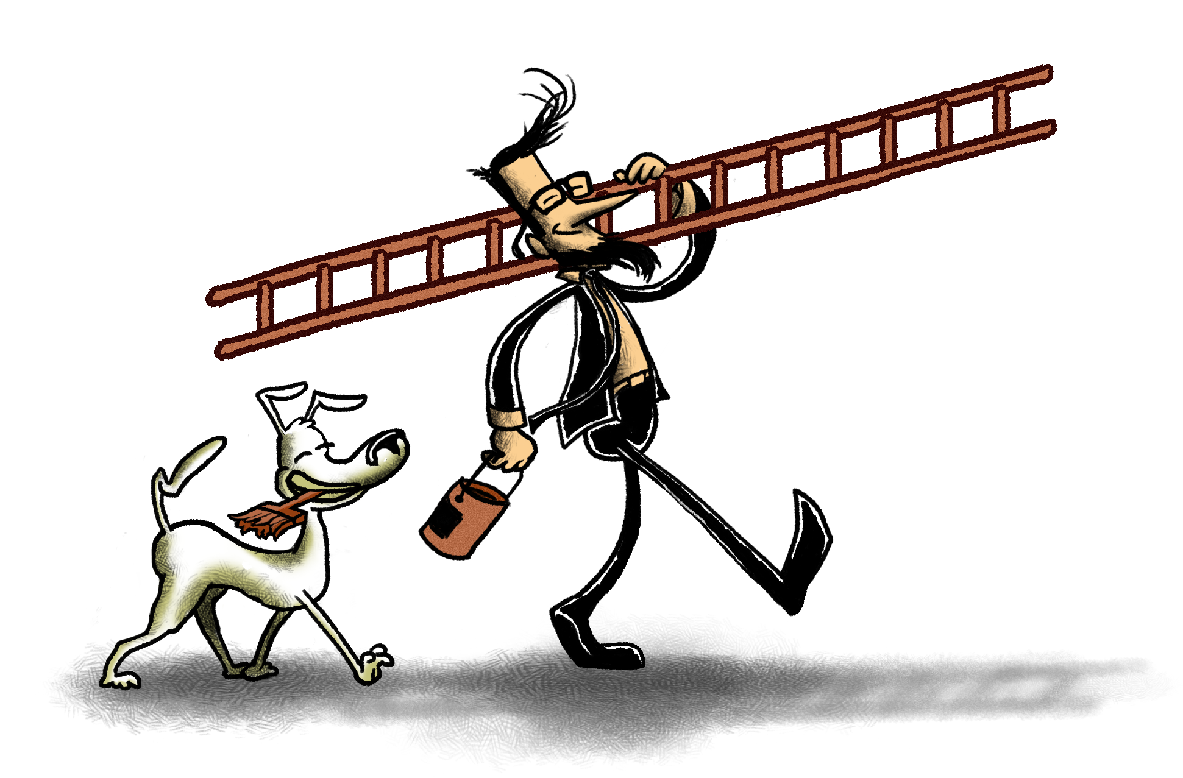Artist Arthur is out of ideas,
his creative well dry for the first time in years
To curtail this creative curse he’ll contrive,
a mechanical marvel of limitless drive
The juncture where art and science interlace,
where unknowable futures awaken at pace
Will the genie of progress proffer boon or calamity,
when machine is tasked with the work of humanity?


In The Amazing Art Machine, the new book by illustrator/author Anthony N. George, we find our main character Arthur face the consequences of investing too heavily in technology to create art for him – a practice that in essence is a deeply human and personal enterprise.
Initially conceived as a zippy short story about an eccentric artist, the deeper I went down the rabbit hole, the more questions I unearthed. The more I thought about the artificial creation of art, the more latent themes coalesced.
I just wanted to write a story about gizmo’s and paint flying through the air, but found myself awake at 3am wrestling moral conundrums. 3am however, is the perfect if not only time for such contemplation. Ask any writer.

The book has a ‘home-base’ illustration style, but I knew right from inception that I wanted the visuals of this story to change, meander and reflect what was being said in the text. What fun, I thought, to explore so many different art styles through a single story, until it came time to produce the illustrations – It wasn’t a case of dashing them off, I really needed to steep in each style and learn it’s techniques. Unlike the central theme of the story, there were no shortcuts in learning how to create cubist or impressionist or pop art.
Though now in 2025 the use of artificial image generation has gained traction and improves at an accelerated pace, when I wrote this story in 2008-2009, the idea was still in the realm of science fiction. I intended to animate the story, got a few shots in the can, but shelved the project where it then gathered dust for the better part of a decade.
The question I ultimately wanted to explore in The Amazing Art Machine was: “can technology replace humanity at the deepest level of being?” Art is what separates man from beast, the springboard where we loose the shackles of our lizard brained evolution from primeval hominid to star-gazing sapien. True, authentic art can only ever be created by a human with experiences based in reality; machine made art is a forgery dressed in bells and whistles. My concern is that in relinquishing one of the fundamental bedrocks of our humanity, our ability to create art – an endeavour that is so intrinsically interwoven in the human condition – the god-like power to create – the very practice that helps us to connect, revel, elicit elation or despair, to make sense of the world around us – is to sink into a kind of oblivion, to willingly dismiss individual agency, to entropy as our tools usurp the work that gives us purpose.
Why do we create art, what is its purpose? What does making art mean to us? Does it define us or ask more questions of us as a species? Is that the aim of art, and the role it plays in our lives? Artists, writers, philosophers and barfly’s have grappled with these questions, giving subjective and objective answers that add to the ornate interwoven cultural tapestry of art definition. What then happens when we strip away all agency and responsibility and allow an artificial agent to replace us in the equation? Is the resultant artificial art of any value, a mess of diminishing returns once initial input has ceased? This is a question The Amazing Art Machine leans into toward the end of the story. Would the everyday populous now accustomed to mass production, mass consumption and throwaway consumerism really care about where and how art is present in their lives – when books, film and music is increasingly referred to as ‘content’? Devalued and dehumanized, I fear apathy will be the death of art.
“Without art” Leo Tolstoy posits in his essay What is art? “mankind could not exist.”
I couldn’t agree more, Leo. From the vantage of our post modern, deconstructed landscape of the twenty first century, we could well amend Mr. Tolstoy’s pithy postulation to “Without human made art, mankind could not exist.”
There is a silver lining to The Amazing Art Machine narrative, though our protagonist is unaware of the far reaching impact his invention has. Art for art’s sake, l’art pour l’art, may well be the ultimate destination for his machine.
It should be noted that no generative Ai was used in the writing and illustrating of The Amazing Art Machine. It would go against everything I stand for as a writer and artist to use generative Ai in the production of a story that speaks intently on the theme of authenticity.
